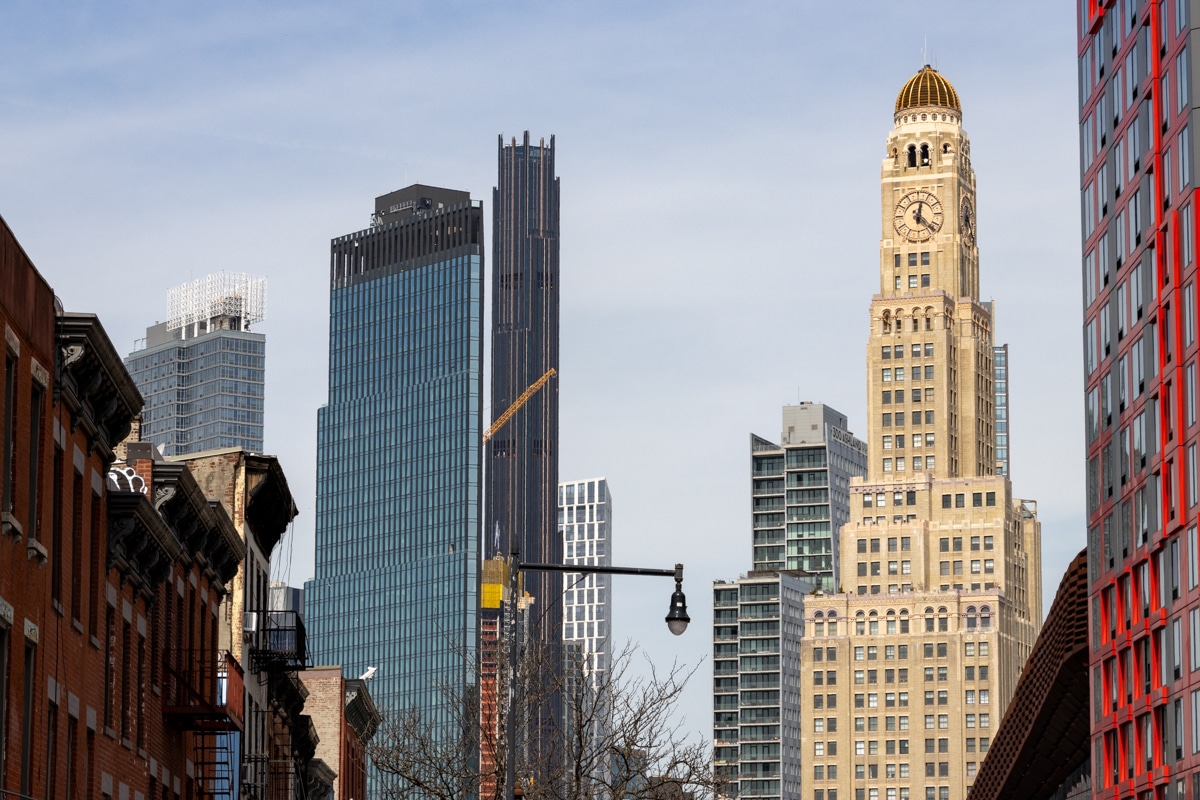Walkabout: Mayhem and Murder at the Melrose Hotel in Flatbush, Part 2
Read Part 1 of this story. Flatbush’s Melrose Hotel was a popular layover for Coney Island travelers, as well as businessmen and visitors to the area. The rather small hotel was once the mansion of the Willink family, a reclusive clan who once owned part of the land now the southeastern part of Prospect Park…


Read Part 1 of this story.
Flatbush’s Melrose Hotel was a popular layover for Coney Island travelers, as well as businessmen and visitors to the area. The rather small hotel was once the mansion of the Willink family, a reclusive clan who once owned part of the land now the southeastern part of Prospect Park and around the beginning of Ocean Avenue.
Once high on a hill, the mansion had been moved, and now sat near the intersection of Flatbush, Ocean and Empire Boulevard, then called Malbone Street. The story of the hotel and the beginning of our tale of mayhem and murder can be found on the highlighted links.
In 1909, Mr. and Mrs. Harry C. Pope checked into the Melrose. By this time, times had changed, and the hotel’s reputation had slipped a bit. While they still got tourists and businessmen as guests, more and more the hotel was becoming used as a convenient space for local meetings and events, and as a headquarters for athletes and trainers using the nearby park as a training ground. It was also becoming a convenient place for quiet assignations and love affairs. The staff and guests of the Melrose that evening in February of 1909 noted the young couple when they checked in as man and wife, as they were well dressed, handsome and beautiful, and so obviously in love.
Harry C. Pope was in his early 30s, the son of a prominent Williamsburg lawyer. His father had died ten years before, leaving Harry and his mother and sister quite well off. Harry, however, was one of those stereotypical rich man’s sons, the kind immortalized in novels and warned about by suspicious mothers of beautiful daughters. He enjoyed his upscale lifestyle, but never seemed to make his own business ventures work out. By 1909, he had blown through his inheritance, had even tried to make it in the gold fields of Alaska, but came back empty handed. He and a business partner ended up opening a saloon in Williamsburg, and Harry decided to go into politics.
He founded a political club for himself, the Harry C. Pope Association, and began fund raising and partying in anticipation of a run for office. He was a very charming guy with lots of enthusiastic friends who urged him to run. He held campaign meetings, and fund raising events, which included social gatherings like dances and parties. Everyone loved Harry, but he was lacking a helpmate at his side.
Harry had been married, but it had not been a loving union. He and his wife, Emma, had been separated for about four years. Before he had courted and married Emma, he had been in love with a beautiful girl named Bessie Schroeder. That relationship had ended, and he married Emma. But he never lost his feelings for Bessie, and when his marriage floundered, the first thing he did was go back to her.
The papers don’t say, but one gets the feeling that the couple had originally been broken up by Bessie’s family, which did not approve of Harry at all. Mrs. Schroeder, Bessie’s keen-eyed mother, a widow with three girls, was the least impressed of all of them. While Bessie was enamored with Harry’s family money, his easy-going manner and general handsome charm, Bessie’s mother saw a young man partying his life away while his inheritance dwindled, who was unable and apparently, unwilling to settle down and take care of business. This was not the kind of man she wanted her daughter to be with. She told her daughter to stop seeing Harry, and told him to stay away from the house.
Of course, as anyone could guess, that only made them better at sneaking around to meet each other. One day in February, 1909, Bessie went out of her house to find a job. She didn’t return. She had actually gone to meet Harry, and they were seen at a fundraising dance for Harry’s association that Saturday night.
A day later, they checked into the Melrose Hotel, far from either one’s home. Both were well dressed, with Harry in a new suit with a fine new walking stick, and Bessie, resplendent in a new hat that highlighted her beauty. They sat down in the first floor restaurant and tucked into a big dinner. They then checked in as “Mr. Harry C. Pope and wife,” went upstairs and stayed there for another few days, only ordering room service.
On Wednesday after noon, the Melrose staff delivered two lunches up to Harry and Bessie’s room. Those meals were later found, barely touched. At around three in the afternoon, a shot was heard upstairs in the hotel, and minutes later, Bessie stumbled downstairs, fully dressed, her chest covered with blood. She fell in the arms of a hotel waiter named Max Klaufner, who had been sitting at the bottom of the stairs on the first floor. “Save me, oh, I am shot! Harry-Mother – save me,” the girl cried, as she lay on the floor, the blood flowing from her body.
Just then, another shot was heard. “That’s Harry, I know what that means!” Bessie tried to get up, but couldn’t. Klaufner rushed to call the Kings County ambulance via the police, and then ran upstairs to find Harry, also fully clothed, lying dead on the bed, and a revolver next to him. The ambulance and the police came quickly and rushed Bessie to the hospital, where it was determined that she had been shot above her breast, the bullet piercing her lung, and missing her heart by inches.
The detectives investigating the scene found Harry had shot himself square in the heart, and had died instantly. The gun lay by his hand on the bed. Although this looked like a classic (attempted) murder/suicide, the police wanted to investigate every angle. They wanted to question Bessie further, and try to piece together the story of what really happened in the Melrose Hotel that afternoon. Bessie had been very lucky to survive the shooting, and doctors were going to remove the bullet from her left lung, pronouncing that she was strong and would most likely recover.
The police went to Harry’s saloon at Reid and DeKalb Avenues and took possession of the premises, closing it down while they looked for evidence. Harry had been living upstairs above his establishment, and they looked for clues amongst his belongings and effects. A note was found in a dresser drawer which had the potential to change everything.
It read, “My dear Harry, I put this note in your dresser to let people know that it was me who killed you and myself because I am so insanely jealous and because you would not marry me on account of Emma. I love you so much I would not let any other girl have you, not even Emma, your wife. You have been all to me and we must go together. My heart is sick. Oh my God, forgive me please. Bessie.”
Hmm, the police now had a conundrum. Had Bessie, the younger jealous mistress, pulled this murder off, and was this note the proof? Bessie had told the police a totally different story. From her hospital bed she told police that they had stayed in the hotel room for days discussing their future.
Harry had always been jealous of anyone else paying attention to her and as the days of that last weekend went by; he began to accuse her of loving someone else. Right before the shooting, she said that he put his arms around her waist and embraced her, asking her to tell him that she loved him. She repeated to him that she loved him, but he told her, “You lie!” He then put the gun to her breast and shot her. She said she had not even seen the gun up until that point, and didn’t understand why he shot her.
Although the infamous letter damning Bessie was soon leaked to the press, and made headlines, the police were not necessarily buying it. There was talk that Bessie would be arrested and a grand jury would be called, but that was merely sensationalistic journalism that would be happy only if everyone involved somehow paid for their sins. The police, fortunately, were more concerned with getting the facts of the case right. The note was problematic, and a red herring.
It wasn’t signed or dated, and the course of events made the confession impossible. How could Bessie have shot Harry when she was lying bleeding on the floor when the fatal shot that killed him was heard? It was nonsense. Police also found that Harry was in even worse financial peril than was imagined. He was flat broke, about to lose his saloon and his home. They found a pawn ticket in his effects showing that he had pawned an expensive watch only days before the assignation, netting him $50, which they had spent on clothing, meals and the hotel room.
The police surmised that Harry had always planned to kill himself at the hotel, and decided that if he couldn’t be with Bessie, no one else would have her love either, and planned to kill her, too. Bessie was still distraught, in spite of everything, and lay in her hospital bed crying for Harry, and wondering why “he didn’t just finish her off.”
Bessie was never charged in his death, and left the hospital several weeks later, released into the care of her mother and sister. By then, the press had moved on, and the Melrose Hotel made the news again, because it had been sold, and would soon be torn down. But before it met the wrecking ball, the old hotel would be the scene for one more mysterious death.
Two years later, in June of 1911, John Cassidy, a 28 year old Parks Department employee and Charles Hand, a 17 year veteran of the police department, stationed at the nearby Park Place Station went for a walk together. They ended up at the Melrose Hotel, where they went to the bar and drank too much, way into the night.
Deciding to sleep it off before both went back to work, they got a room together. About an hour after they retired, the night desk man was summoned to the room. Charles Hand was in the bed. He was frantic and told the desk man that he had just been hit over the head and robbed of a gold watch and his wallet by Cassidy, who had climbed out of the window to get away.
The men ran outside, and found Cassidy hanging on the fire escape by one arm, unconscious and bleeding. He was taken to the hospital with a skull fracture. The doctors operated on him, but Cassidy died, even as police were getting ready to charge him with robbery. The case would seem to be over, but friends of Cassidy lodged a protest. The two men were supposed to be good friends, and why did they register in the hotel, both under assumed names, if there was nothing more suspicious going on than two friends not wanting to wander the streets of Brooklyn in a state of intoxication?
Hand was suspended while the investigation continued, mostly on the excuse that he, as a police officer, should have filed a report on the incident. When the hotel man came to the door, after Hand had called him, Hand told him he couldn’t let him in, because he had lost the key, and the man had to go downstairs and get another. When he came back, they found blood and signs of a struggle.
The blood belonged to Cassidy. Hand had told the investigators that there had been no struggle, Cassidy had hit him in the head, robbed him, and run. It wasn’t looking good for Officer Hand, who could have put together a better alibi, and John Cassidy’s friends were not going to let it go. Hand was later charged with murder. What else had been going on in that room at the Melrose? Newspaper accounts would not have dared speculate.
This would be the Melrose Hotel’s last big mystery. The next headlines told of the building being torn down. The first of Ocean Avenue’s many Art Deco era apartment buildings now sits near the site. GMAP








What's Your Take? Leave a Comment